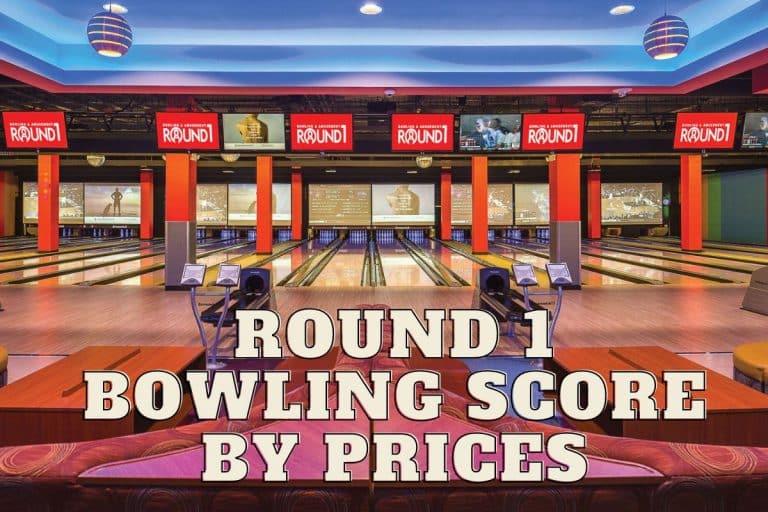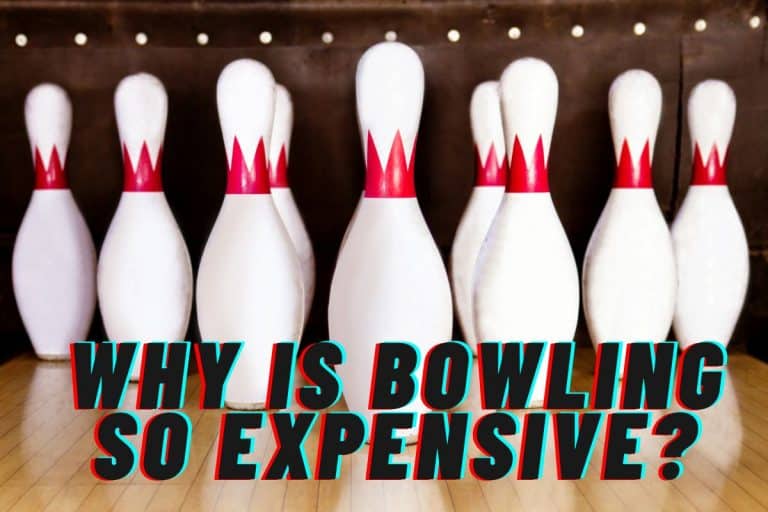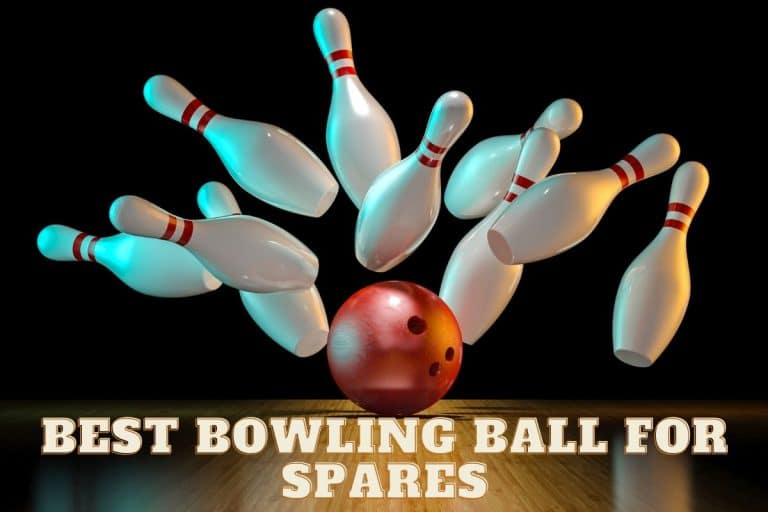What are the Bowling Lane Dimensions? [Official USBC]
When you observe a bowling lane, you will recognize that it has a rectangular shape, although long stretched out. But have you ever wondered about the dimensions of a bowling alley lane? Read on to find out what we discovered.
A standard bowling lane is a rectangular, straight, long, stretch or corridor with two gutters on either side. The approach area is located at the front of the lane and includes a foul line that must not be crossed. The gutters or ditches are located in the center of the lane.
A bowling pit at the lane's end houses the bowling pins and any mechanical equipment related to them. Bowling lanes are typically seen at bowling alleys and are made of polished wooden boards and are marked with guide arrows and dots to help bowlers line up their shots.
Bowling lanes are 60′ (18.29 m) long and 41.875′ (41.875 m) wide “(106.36 cm) wide. A bowling lane's overall length (including the front approach area and the rear service area) is 86.5′ (26.36 m), and is 60′ ” (1.52 m) in width.
The gutters are 9.25″ (23.5 cm) wide and 1.875″ deep (47.6 mm). Normally, the approach area is 15′ (4.57 m) long. For more details, check https://www.dimensions.com/element/bowling-lane. But what are the minimum bowling lane widths? Read on to find out.
Bowling Lane Minimum Width requirements
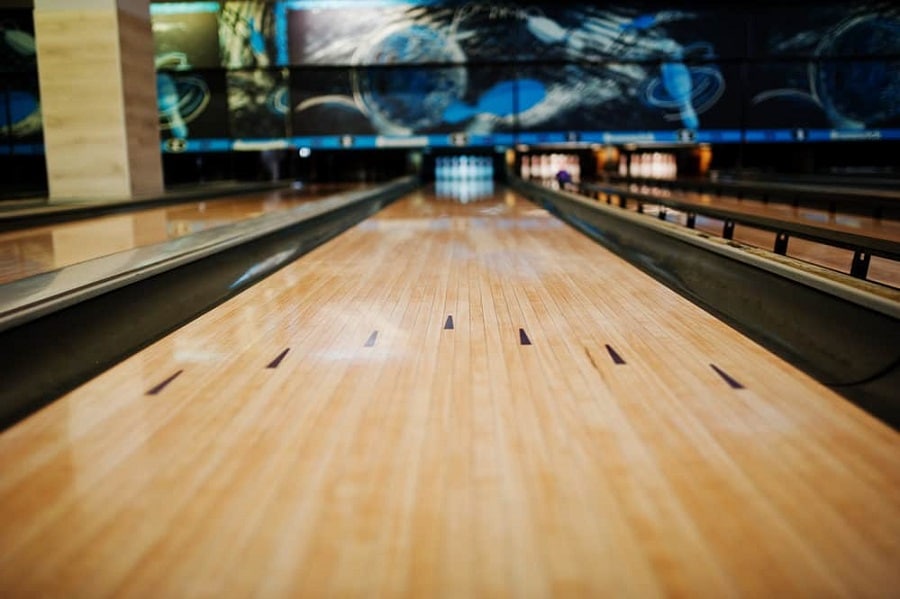
Setting up a bowling alley is simple; however, one must acknowledge the minimum space needed. For example, a pair of lanes may measure 11'6″. The minimum width for a single-lane layout is 6'9″.
On the other hand, four-lane projects must have a minimum width of 22'8″. Aside from the area required for the bowling equipment, it is normally recommended to include some extra space on both sides of the lanes, either for a passage to the mechanical room in the back or to offer the bowlers more room to roam around.
While many people see the bowling lane as one solidified object, they fail to realize that the lane is broken up into several parts as each part contributes to the lane. Therefore, apart from the bowling dimensions, here are some parts you must know.
What are Bowling Lane Boards?
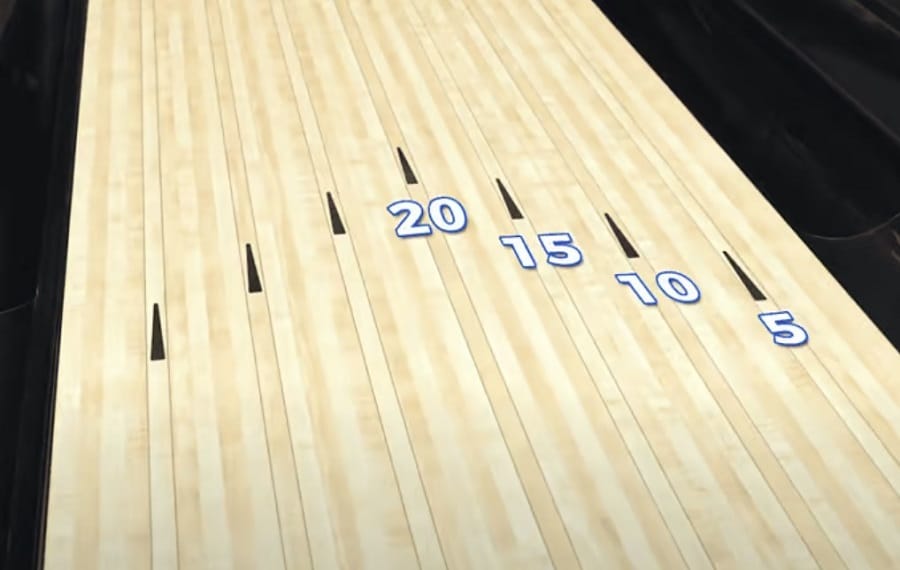
Bowling lanes of all types (candlepin, ten-pin, nine-pin, duckpin, and five-pin) are composed of 39 one-inch-wide boards, with the middle one labelled as board number 20. The boards are generally wood, but the lane is divided into three sections.
The first area, ranging from the foul line to 12 feet out, is made of maple. The second section, extending from the 12-foot mark to the headpin (a total of 46 feet), is constructed of pine. The final area, where the pins are located, is maple again, completing the wooden floor of the alley.
What is The Approach Area in Bowling?
A 15-foot wooden area, the approach zone, closes at the foul line and is where bowlers can arrange their stance, time their movements and get their minds ready for the throw. They can use the marks on the wooden boards to maintain their position.
At the back of the 15-foot space is the machine that produces the balls after they are taken in, placed either to the right or left of the lane to allow the bowlers enough room to prepare for the throw.
What is the Bowling Wall?
The bowling wall is located at the end of the 60-foot lane and houses the pins and the bowling machine. Advertisements or bright bowling graphics reminiscent of Alice in Wonderland are commonly used to mark the bowling wall.
What is the Foul Line?
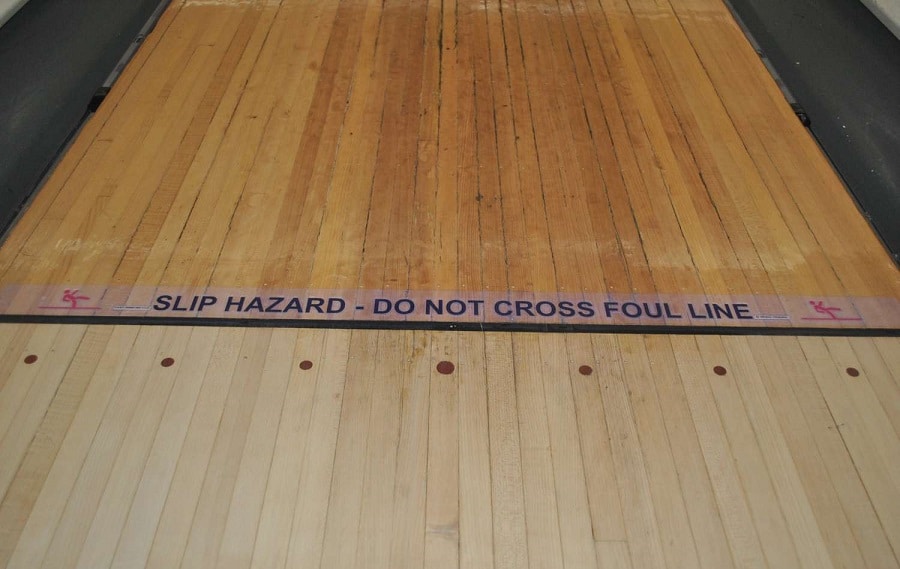
A bowling lane's foul line is painted across the boards at the start of the lane, between the two gutters. Its goal is to alert the bowler when they have surpassed the limit and fouled. A foul is committed when the bowling ball crosses the foul line.
A foul is generally defined as a foot coming into contact with the floorboards beyond the foul line. Most bowling alleys feature sensors connected to the foul line that, when activated, produce a signal, such as lights flashing or an alarm ringing.
What Are Gutters in Bowling?
A gutter, a dipped trench usually composed of rubber or plastic, sits on each side of the bowling alley. The gutters are also 60 feet long. When a bowling ball lands in the gutter after bouncing off the wooden part of the lane, it is termed a miss, and no points are added to the existing score.
Many frustrated groans and desperate prayers have been uttered due to gutters, but for some reason, most of them go ignored.
What Is the Head Pin in Bowling?
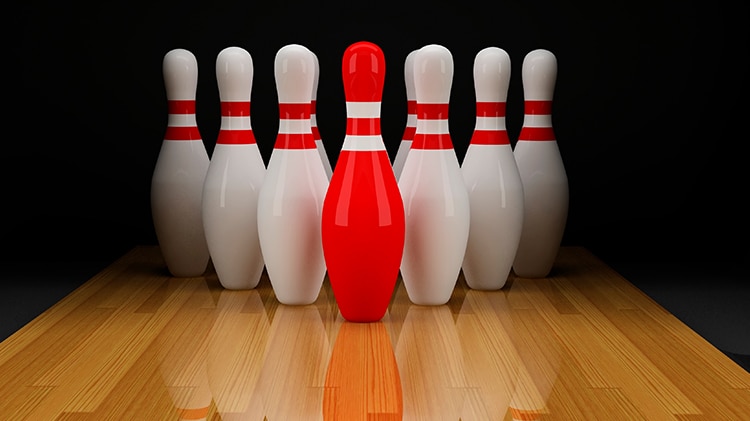
The head pin, often known as the “one pin” or “pin one,” is located 60ft away from the foul line, at the very front of the pyramid formation of pins. The head pin, which serves as a marker for the 60-foot lane, indicates where the bowling wall begins and where the lane ends.
Features To Look at When Bowling?
As a novice, you will be primarily concerned about the pins and how to hit them when throwing the ball. Additionally, you must be mindful of not crossing the foul line. As you practice your approach, you may need help getting your footwork precise and having your front foot stop ahead of the foul line as you release the ball.
To assist with this, there are two sets of dots known as approach dots. The initial collection of markers is situated 12 feet from the line of demarcation and the subsequent one is 15 feet away. You can use these dots with some practice to ensure your footwork and stride are correct.
Another set of markers for your use is the arrows. These arrows are situated 15 feet from the foul line and can be used to pinpoint where you want to launch the ball. While some bowlers concentrate on the pins, others focus on a particular arrow to get the ball going in the right direction.
Bottom Line
If you've been curious about bowling lane dimensions, you've come to the right place. We have also outlined all of the components of the bowling platform, as well as the various features and intelligent assistance to assist bowlers of all levels in improving their skills.
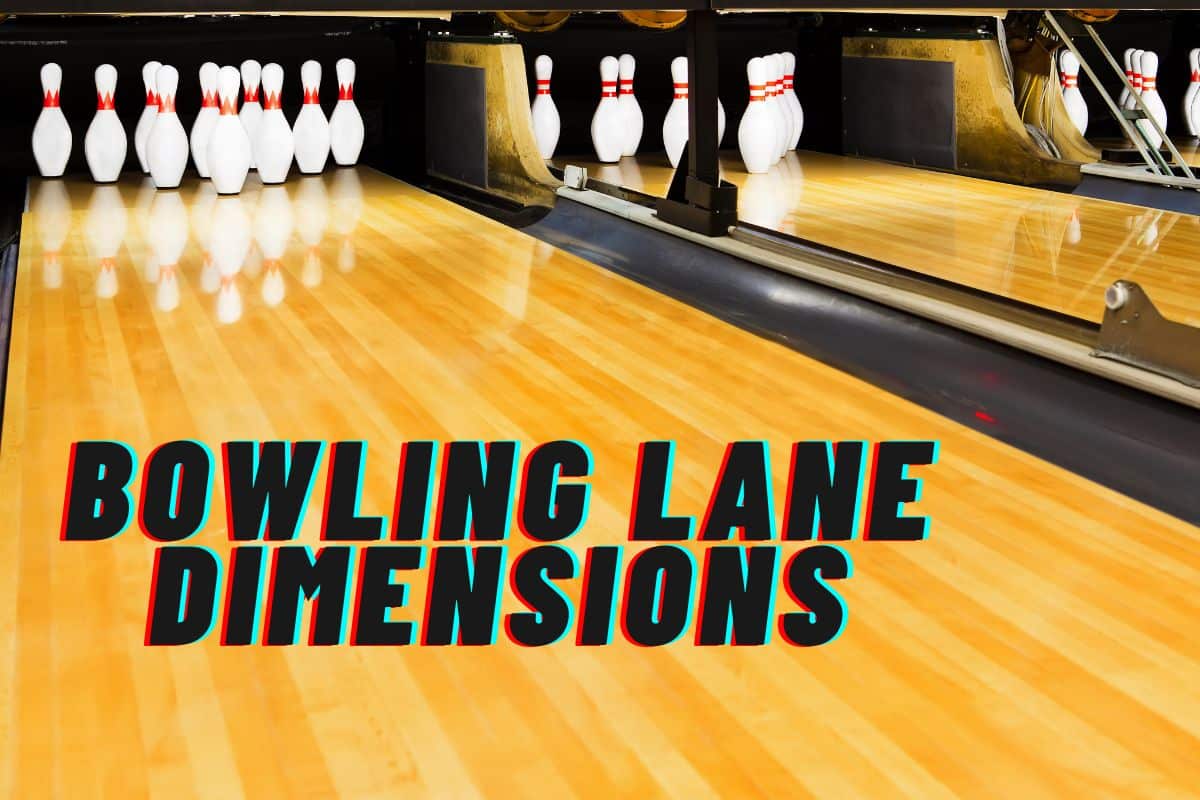
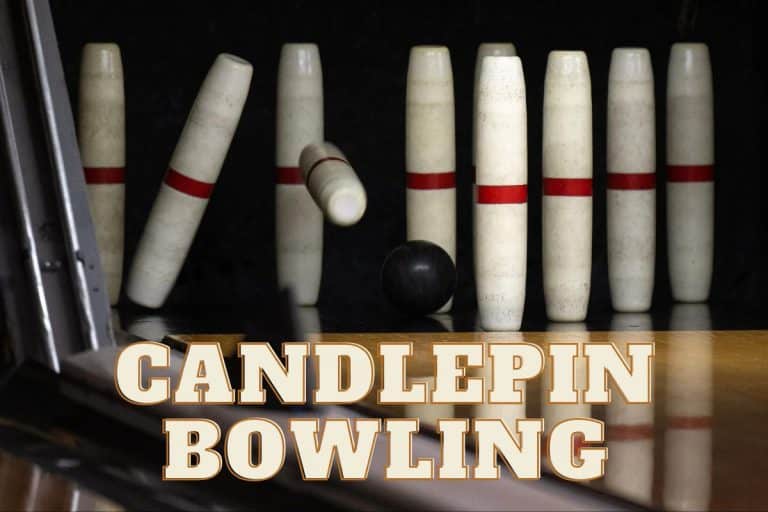
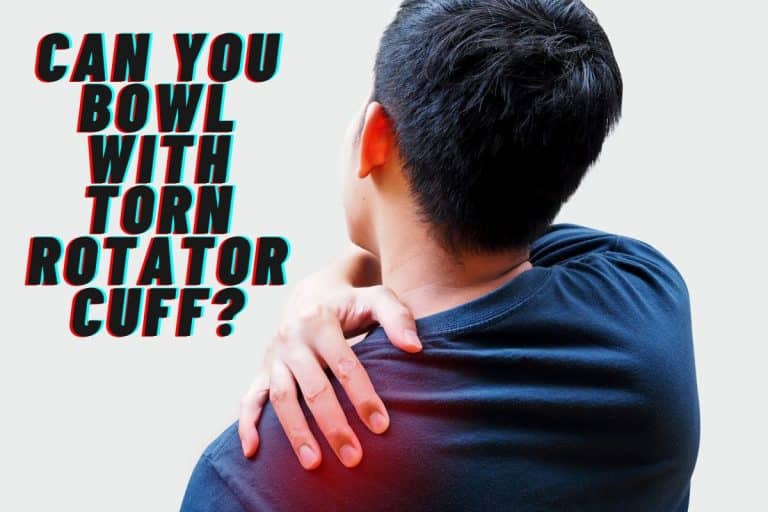
![Can a Bowling Ball Lose Its Hook? [Make It Hook Again]](https://www.bowlingknowledge.com/wp-content/uploads/2023/03/Can-a-Bowling-Ball-Lose-its-Hook-768x512.jpg)
